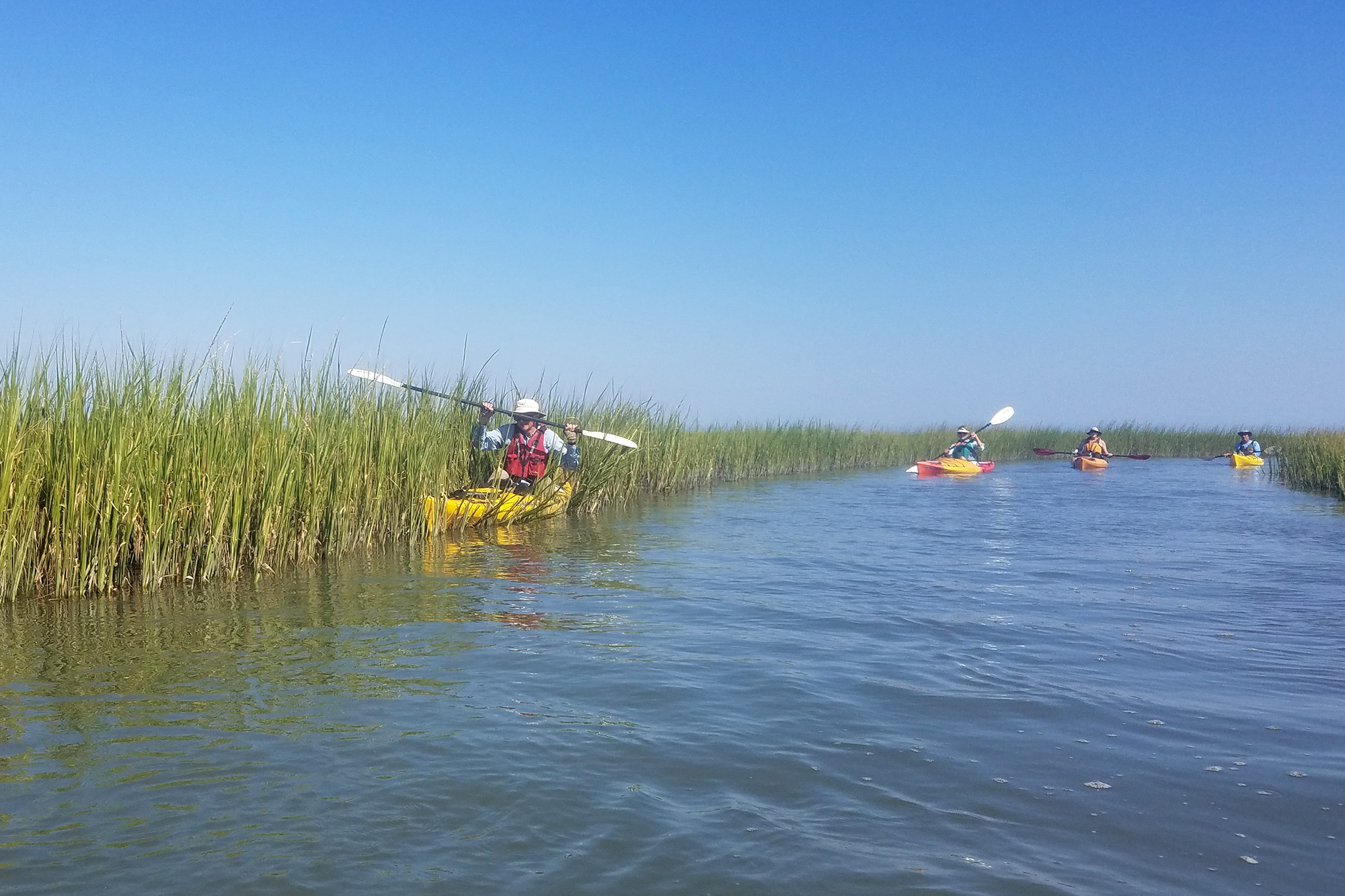Learning is half the fun, right?
The pursuit of any new hobby or pastime always comes with learning a few lessons as you get started.
Wading into the world of paddling is no different.
But don’t fear!
If you are thinking about exploring the Middle Peninsula water trails, we’ve put together a list of 10 ways to set you on the right course to make your first kayaking, canoeing or paddleboarding excursion a success.

Find a pro.
Especially helpful on your very first trip, consider having an experienced friend or guide along for the ride. The smaller intricacies and nuances of paddling can be made much easier to grasp and get an idea of by having someone there to show you themselves. Consider hiring a Virginia Certified Ecotour Guide. Certified Virginia Ecotour Guides share fun facts about our beautiful coastal ecosystems and their wild inhabitants. They have received training in wildlife and habitat protection, customer service, interpretation, and planning – so you are sure to have a safe and enjoyable time, naturally.
Plan, plan, plan.
As with any outdoor expedition, be it a hike, camping, or in this case, paddling, planning is one of the most important and often overlooked facets of a good trip. Ensure that you know your route, you have packed appropriately and have reviewed the top safety tips. This includes good clothing for any inclement weather that is also comfortable, first aid and safety equipment (life-jackets, sunscreen, whistle, etc.), and as you will read below, the right paddling equipment for you. There is no such thing as over planning!

Find the right vessel.
As you can probably imagine, kayaks, canoes, and paddleboards come in many different shapes and sizes. Just like all of us. The best thing you can do to find the equipment for you is to simply try things out. Whether you plan on buying or renting your equipment, try out as much as you can to find what suits you best.
Expect anything.
One of the most important things to keep in mind while exploring Virginia and her natural waterways is the unpredictability. Similar to planning for the expected parts of the trip, it is equally essential to plan for the worst. Rainstorm? Bring dry-bags and rain gear. Emergency? Pack first aid and food. It’s much better to have it and not need it than to need it and not have it.

Trust your partner.
As explained earlier, it’s a great idea to bring along a guide or a friend who has more experience than yourself, but it’s also equally important to ensure that you trust them. These are the people who are going to be able to help you when guidance is needed, when another hand is required, or, hopefully not, in times of emergency.

Get comfortable.
This may seem like a no brainer, but make sure that you feel comfortable sitting in your canoe or kayak or standing on your paddleboard. It’s one thing to plan for every possible dilemma you may face and to know all the paddle moves by heart, but simply being comfortable is going to make your trip the most enjoyable. Paddling, after all, is supposed to be fun!
Don’t be afraid of failure.
Nobody is an expert on their first try! We’ll repeat that again – nobody is an expert on their first try! A little awkwardness or unexpected difficulty in the beginning is totally natural. Simply sitting in or on the vessel without losing your balance can be one of the most difficult parts of the entire experience, or learning how to turn, so don’t expect to get it perfect on the very first go.

Practice your strokes.
Paddling through many different bodies of water can require different strokes. On the Middle Peninsula you can go up creeks, down rivers and experience boat wakes. For large river voyages, the basic forward and reverse stroke may be all you need, however, for tighter creeks and smaller river excursions, you’ll probably need sweeping strokes to facilitate turning, all of which can be practiced ahead of time.
The wind is your friend.
In a perfect world, your first paddle trip will be on a day without any wind, or at least a very small amount. However, should wind be unavoidable, use it to your advantage. By using a tailwind, your life will be made much easier as it’s much better for your muscles traveling downwind as opposed to upwind. Over time, learning and using the wind gets easier and easier.

Don’t forget to admire what’s around you.
On your very first trip out paddling, it can be easy to get preoccupied with trying to do everything right. Don’t forget, though, that the whole point of paddling out in nature is to see and explore nature. Don’t forget to look up and out every once in a while and take in what the Middle Peninsula is best known for – pristine blue-green infrastructure and wildlife.
Paddle on, friends. And when you do, if you happen to look up and take some photos, be sure to tag the Virginia Water Trails on Facebook with #RuralCoastalVA and #RCVA.

